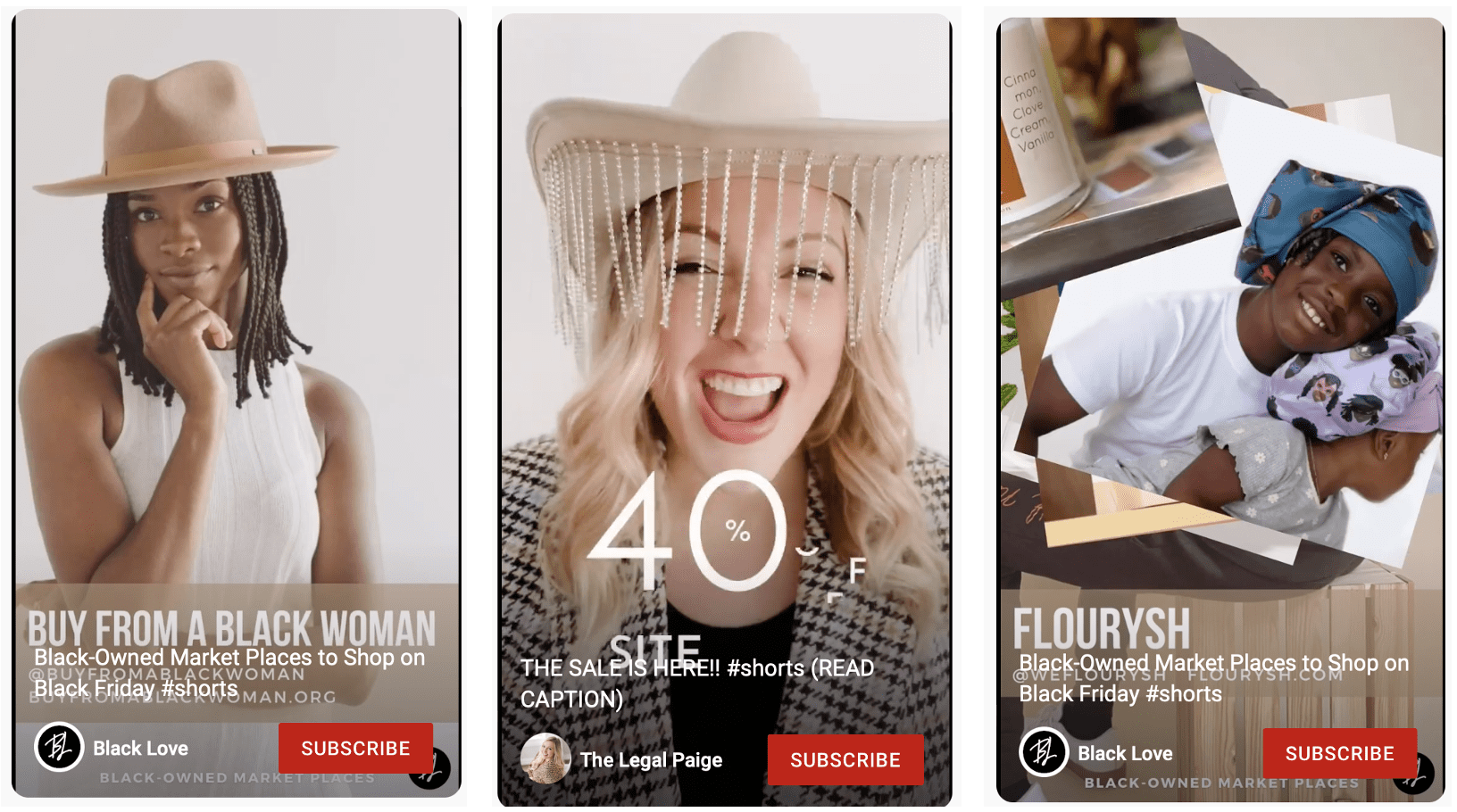Short-form video is an important battleground for brands and consumers right now. TikTok really changed the game for video content creation by inspiring millions of people to create TikTok videos that typically last anywhere from 10 seconds to 60 seconds. Since then, a host of imitators have appeared, including Meta’s Reels on Facebook and Instagram; and YouTube Shorts.
Many businesses have quickly cracked the code for creating short-form video, and everyday users continue to up the ante, too, which has accelerated the rise of the creator economy, or everyday creators who monetize their content with the help of the host app.
Short-form video is also rapidly evolving as a format for creating ads, free content, and shoppable experiences. The latest example: YouTube Shorts is expanding shopping features.
What Is YouTube Shorts?
Shorts is a feature available to YouTube users. With Shorts, people can quickly and easily create short videos of up to 15 seconds, similar to how TikTok and Instagram Reels are used. The videos are created on mobile devices and viewed, in portrait orientation, on mobile devices. And once a person opens one Short, they get access to tons more of them (again, think TikTok or Reels playing one after another.) According to Google, YouTube Shorts now averages over 30 billion daily views (four times as many as a year ago).
It did not take long for businesses to get involved with Shorts. As we have blogged, brands everywhere are connecting with the vast YouTube audience with organic content and advertising.
For instance, Kitchen and home marketplace Food52 is posting Shorts that offer sneak peeks at its longer-form content on the traditional version of YouTube, as well as repurposing some recipe videos. Drupely’s olive-oil brand Graza says it is creating user engagement by posting how-to cooking and recipe content. According to Graza, videos focused solely on Graza products do better on TikTok than on Shorts.
Social Commerce on Shorts
If YouTube has its way, more brands will be using Shorts to sell things to people. New shopping features are being tested by YouTube in order to accelerate social commerce on YouTube. The new shopping features allow users to purchase products as they scroll through Shorts.
In the United States, eligible creators can tag products from their own stores. Viewers in the United States, India, Brazil, Canada and Australia can see the tags and shop through the Shorts. (The plan is to expand tagging for more creators and countries.)
YouTube is also experimenting with an affiliate program in the United States. This makes it possible for creators to earn commissions through purchases of recommended products in their Shorts and regular videos. YouTube says that this test is in early days. The program will be expanded in 2023.
This is just the latest in many efforts by YouTube to inject social shopping into the user experience. For instance, YouTube launched shoppable ads and the ability to shop directly from livestreams hosted by creators. YouTube has good reason to make it easier to buy and sell products on Shorts. Shorts has topped 1.5 billion monthly users. According to gen.video, YouTube ranks third overall in terms of where consumers do their product research before buying, only behind Amazon and Google directly.
YouTube Shorts is in a race with Instagram and TikTok to win attention from shoppers. Both apps have a head start on Shorts, and TikTok is testing TikTok Shop in the United States. TikTok Shop allows users to buy products directly through the app. All of them are trying to get a slice of the social shopping pie: social commerce is expected to be a $2 trillion market by 2025.
Brands are already figuring out how to sell products via Shorts. Glossier sold products through Shorts in June by creating a challenge for users to try. Glossier gave about a hundred influencers a new pencil eyeliner and encouraged them to create Shorts videos with the hashtag #WrittenInGlossier in the caption. People who tapped the hashtag were brought to the Glossier website. There, they could buy the eyeliner and were asked to recreate a look as part of the challenge. Any Shorts video that included the hashtag was shoppable.
2023 will likely be a year for more shopping features to proliferate on video platforms, with Shorts, TikTok, and Instagram duking it out for consumers’ attention amid a recessionary economy. Who will win? We’ll report progress here.
Contact True Interactive
We deliver results for clients across all ad formats, including video and mobile. To learn how we can help you, contact us.
“Why Google Is Bullish about Winning Its Fight with TikTok”
“How Brands Are Using YouTube Shorts”
